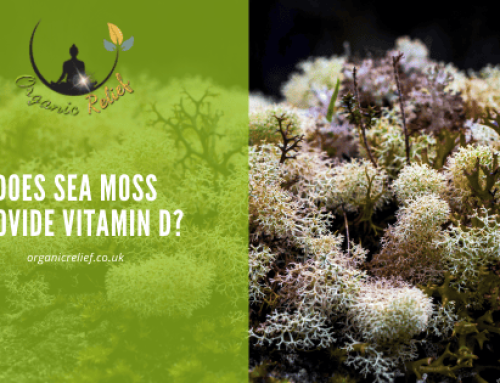Glaucoma is a progressive eye condition that can lead to irreversible vision loss. While there are several traditional treatments available, many patients are turning to alternative therapies such as CBD to manage their symptoms. But how exactly does CBD work for glaucoma? In this article, we’ll explore the science behind CBD and its potential benefits for glaucoma patients. From the endocannabinoid system to the latest research findings, we’ll take a deep dive into the mechanisms behind CBD’s effects on glaucoma. So if you’re curious about the science behind CBD for glaucoma, keep reading to learn more.
What is Glaucoma and How Does it Affect the Eyes?
Glaucoma is a group of eye conditions that damage the optic nerve, which is responsible for transmitting visual information from the eye to the brain. This damage is usually caused by increased pressure in the eye, which can be due to a buildup of fluid. There are several types of glaucoma, but the two main categories are open-angle and angle-closure glaucoma.
Open-angle glaucoma, also known as primary open-angle glaucoma, is the most common form of glaucoma. It occurs when the drainage angle between the cornea and the iris becomes partially blocked, causing fluid to build up and increase the pressure in the eye. This type of glaucoma usually progresses slowly and can lead to gradual vision loss over time.
Angle-closure glaucoma, also known as closed-angle glaucoma, is less common but more serious. It occurs when the iris is pushed forward and blocks the drainage angle, causing a sudden increase in eye pressure. This type of glaucoma requires immediate medical attention to prevent permanent vision loss.
In addition to these types, there is also normal-tension glaucoma, which occurs when the optic nerve is damaged despite normal eye pressure levels. This type of glaucoma is less understood and may be due to poor blood flow to the optic nerve.
Overall, glaucoma is a serious eye condition that can lead to irreversible vision loss if left untreated. That’s why it’s important to get regular eye exams, especially if you’re over the age of 60 or have a family history of glaucoma. Early detection and treatment can help prevent or slow the progression of the disease.
CBD is also known as cannabidiol, which is a cannabinoid found in the cannabis plant. Unlike other elements found within the plant, CBD doesn’t get you high and is not psychoactive. This is what makes it safe and legal to take in the form of your choice. You can find many different forms of CBD available to help with pain, such as oils and gummies.
It does this, as well as providing a host of other beneficial effects, by promoting homeostasis within the body. This is essentially a healthy balance of all the elements needed to promote healthy living in humans.
The Endocannabinoid System: How it Relates to Glaucoma and CBD
The endocannabinoid system (ECS) is a complex network of receptors and neurotransmitters that help regulate various physiological processes in the body, including inflammation, pain, mood, and appetite. The ECS also plays a crucial role in maintaining intraocular pressure (IOP), which is a key factor in the development and progression of glaucoma.
Research has shown that the ECS is involved in the regulation of IOP and that dysfunction in the ECS may contribute to the development of glaucoma. In particular, studies have found that the CB1 receptor, one of the primary receptors in the ECS, is present in high levels in the eye and plays a significant role in regulating IOP. When activated by cannabinoids like CBD, the CB1 receptor can help reduce IOP and potentially protect against glaucoma.
CBD, or cannabidiol, is a non-intoxicating compound found in cannabis plants that has gained attention in recent years for its potential therapeutic benefits. CBD has been shown to have anti-inflammatory and neuroprotective effects, which may be beneficial in the treatment of glaucoma. Additionally, some studies have found that CBD can reduce IOP in both animal and human models of glaucoma.
While more research is needed to fully understand the potential of CBD in the treatment of glaucoma, the connection between the ECS and IOP regulation suggests that it may be a promising avenue for further exploration. If you’re interested in learning more about how CBD and the ECS relate to glaucoma, keep reading to find out.
How CBD Can Help Lower Eye Pressure in Glaucoma Patients
One of the primary ways in which CBD may be able to help glaucoma patients is by reducing intraocular pressure (IOP), which is the main cause of optic nerve damage in glaucoma. While there are several medications currently available that can help lower IOP, some patients may experience side effects or find them ineffective. This is where CBD may come in as a potential alternative treatment option.
Several studies have investigated the effects of CBD on IOP in both animal and human models of glaucoma. One study in rats found that CBD was able to significantly reduce IOP and protect retinal neurons from damage. Another study in humans with glaucoma found that a single dose of CBD eye drops was able to lower IOP by up to 25%.
While the exact mechanism by which CBD lowers IOP is still not fully understood, it is thought to be related to its interaction with the endocannabinoid system (ECS). As mentioned earlier, the ECS plays a key role in the regulation of IOP, and CBD is able to interact with ECS receptors to help modulate this process.
It’s important to note, however, that while CBD may be able to lower IOP, it is not a cure for glaucoma. Regular monitoring and treatment by a healthcare professional is still necessary to prevent optic nerve damage and vision loss. Additionally, more research is needed to fully understand the long-term effects and safety of using CBD for glaucoma treatment.
If you’re interested in exploring CBD as a potential treatment option for glaucoma, it’s important to speak with your healthcare provider first to ensure it is safe and appropriate for you.
The Role of THC in Glaucoma Treatment
While CBD has gained attention for its potential therapeutic benefits in glaucoma treatment, THC (tetrahydrocannabinol) may also play a role. THC is the primary psychoactive compound in cannabis, and it has been studied for its effects on intraocular pressure (IOP) in glaucoma patients.
Like CBD, THC is thought to lower IOP by interacting with the endocannabinoid system (ECS), specifically by activating the CB1 receptor. In fact, early research on THC’s potential as a glaucoma treatment dates back to the 1970s, when studies found that THC was able to significantly lower IOP in both healthy individuals and glaucoma patients.
However, despite these promising findings, THC has not been widely used as a glaucoma treatment due to its psychoactive effects and potential for abuse. Additionally, the short duration of its effects means that it would need to be administered every few hours in order to maintain its therapeutic benefits, which may not be practical for all patients.
It’s also worth noting that while THC may be able to lower IOP, it has been shown to have a negative effect on certain aspects of vision, such as contrast sensitivity and visual acuity. These effects may limit its usefulness as a glaucoma treatment, especially for patients who need to maintain a certain level of visual acuity in order to perform daily activities.
CBD Dosage for Glaucoma
Determining the proper CBD dosage for glaucoma can be challenging, as there is no standard dose that works for everyone. Dosage recommendations may vary depending on a variety of factors, including the severity of the patient’s glaucoma, their age and weight, and their overall health.
It’s important to start with a low dose of CBD and gradually increase it until the desired effects are achieved. A general starting point for CBD dosing is around 5-10mg per day, but some patients may require higher doses to achieve the desired therapeutic benefits.
It’s also important to note that different forms of CBD may have different absorption rates and bioavailability, which can impact their effectiveness. For example, CBD oil taken sublingually may have a faster onset of action and greater bioavailability compared to CBD edibles or capsules.
If you’re unsure about the proper CBD dosage for your glaucoma, it’s best to consult with a healthcare provider who is knowledgeable about cannabis-based treatments. They can help you determine the appropriate dosage based on your individual needs and monitor you for any potential side effects.
In addition to finding the right CBD dosage, it’s also important to ensure that you’re using a high-quality CBD product from a reputable source. Look for products that have been third-party tested for purity and potency, and avoid products that contain harmful additives or contaminants.
Overall, finding the right CBD dosage for glaucoma requires careful experimentation and consultation with a healthcare provider. With the right approach, CBD may be able to provide relief for glaucoma patients without the side effects associated with traditional treatments.
Conclusion
In conclusion, the scientific evidence supporting the use of CBD for glaucoma continues to grow. Studies have shown that CBD can help to lower intraocular pressure, which is a key risk factor for glaucoma. Additionally, CBD’s anti-inflammatory and neuroprotective properties may also be beneficial in the treatment of glaucoma and its associated symptoms.
While more research is needed to fully understand the therapeutic potential of CBD for glaucoma, early findings are promising. CBD presents a safe and effective treatment option for glaucoma patients, with fewer side effects than traditional pharmaceuticals.
It is important to note that CBD should not be considered a replacement for standard glaucoma treatments, and patients should always consult with a healthcare professional before starting any new treatment.
As the legal landscape surrounding CBD continues to evolve, it is likely that we will see more research on its potential uses in the treatment of glaucoma and other ocular conditions. For now, glaucoma patients can take comfort in the fact that CBD presents a promising and safe option for managing their symptoms.







[…] potential for our well-being. Let’s embark on a journey through the fascinating mechanisms behind CBD’s effects on our […]
[…] for our well-being. Let’s embark on a journey through the fascinating mechanisms behind CBD’s effects on our […]
[…] for our well-being. Let’s embark on a journey through the fascinating mechanisms behind CBD’s effects on our bodies. At the core of this captivating interaction lies the endocannabinoid system […]
[…] for our well-being. Let’s embark on a journey through the fascinating mechanisms behind CBD’s effects on our bodies. At the core of this captivating interaction lies the endocannabinoid […]
[…] for our well-being. Let’s embark on a journey through the fascinating mechanisms behind CBD’s effects on our […]